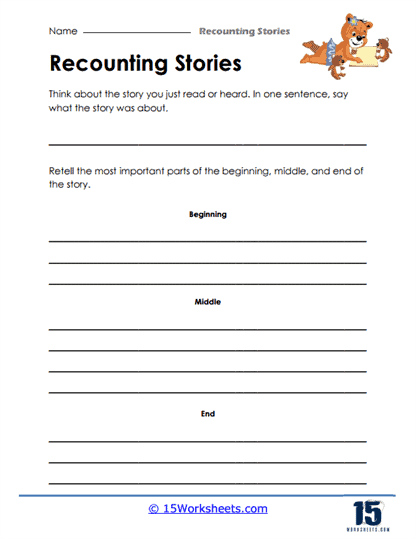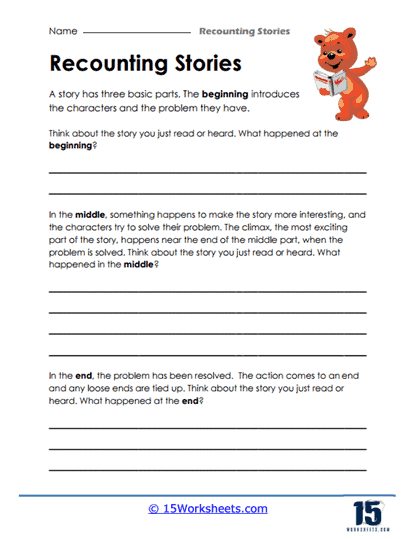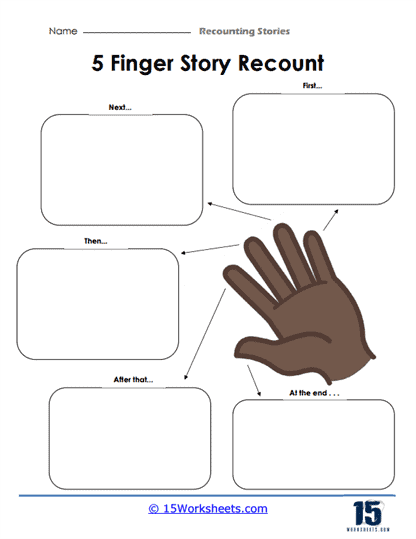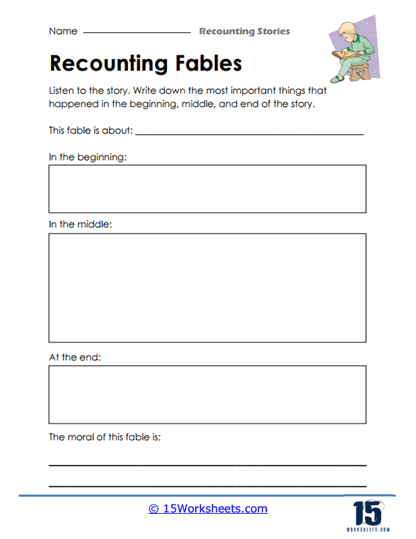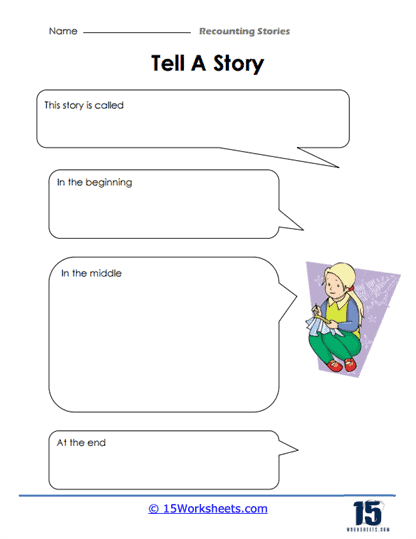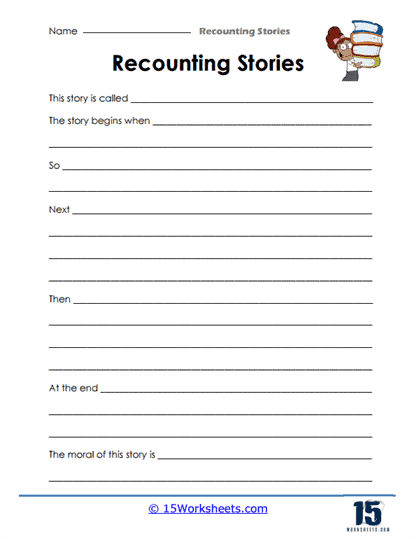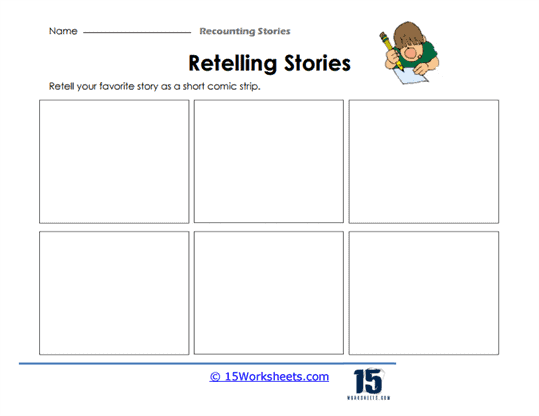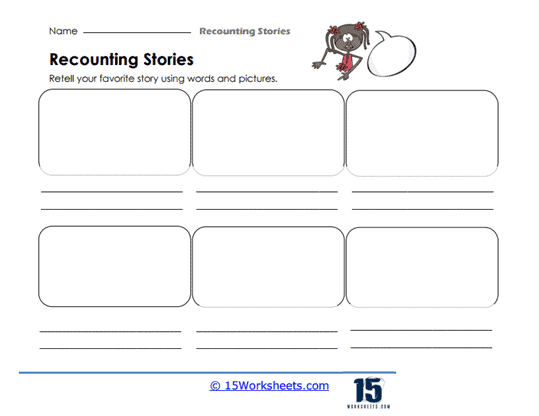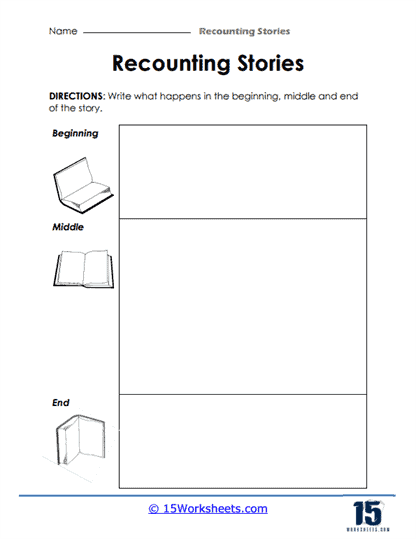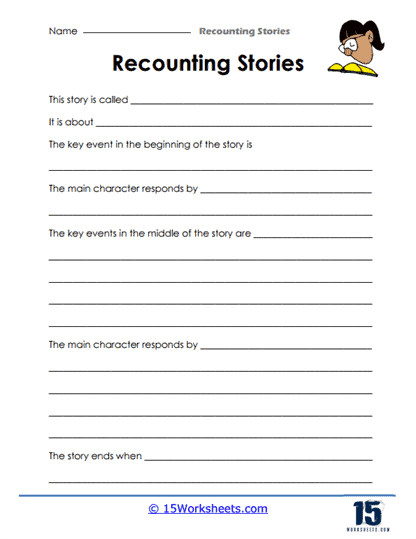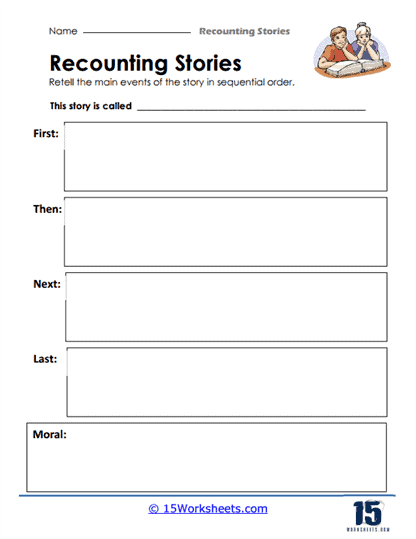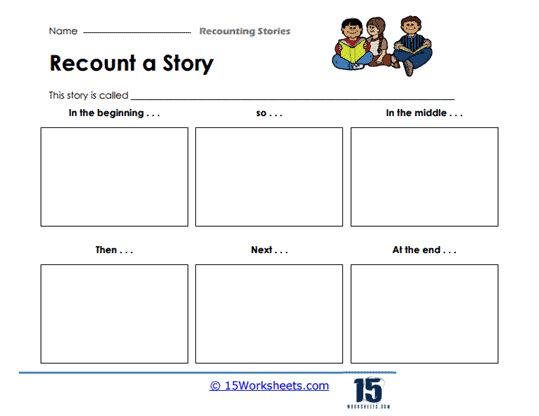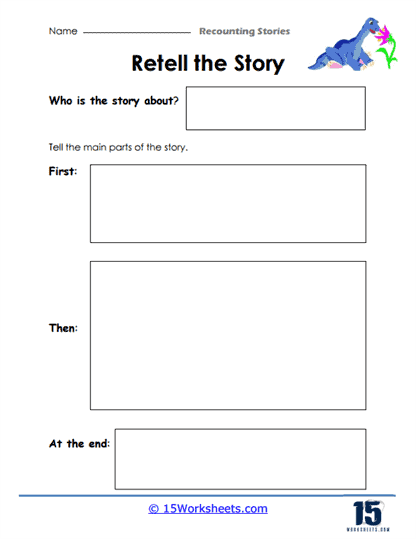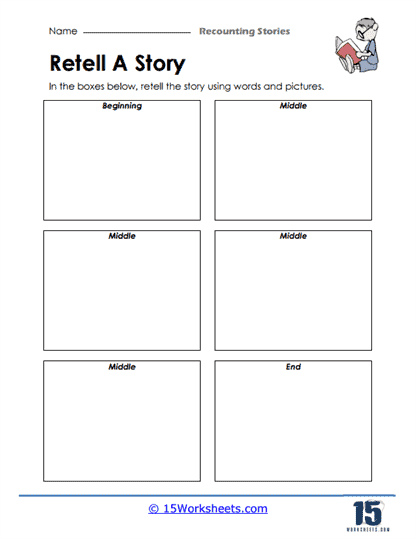Recounting Stories Worksheets
All About These 15 Worksheets
These recounting stories worksheets are designed to help students develop their skills in summarizing and retelling a story. These worksheets include a variety of activities that encourage critical thinking and analysis of the story’s plot, characters, and themes.
Some of the activities that are included in these worksheets involve:
- Identifying key events – Students are asked to identify the key events in the story and to summarize them in their own words.
- Analyzing character development – Students are encouraged to analyze how the characters in the story develop from the beginning to the end of the story, and how their actions contribute to the plot.
- Summarizing the plot – Students are asked to summarize the plot of the story in a few sentences or paragraphs.
- Retelling the story – Students are encouraged to retell a story in their own words, using appropriate vocabulary and sentence structure.
Overall, these worksheets can help students to develop a deeper understanding of the elements that make up a story and to appreciate the complexity and artistry of storytelling. By analyzing and recounting stories, students can become more engaged and effective readers, and develop their own skills as writers.
Tips on how to effectively recount stories
Here are some tips that teachers can share with their students to help them recount, retell, or summarize stories effectively:
- Identify the key events – When recounting a story, identify the key events that make up the plot. This can help you to create a clear and concise summary of the story.
- Use appropriate vocabulary – Use vocabulary that is appropriate for the tone and context of the story. This can help you to convey the intended meaning and to create a summary that is engaging and easy to understand.
- Organize your thoughts – Organize your thoughts before you begin to retell or summarize the story. This can help you to create a clear and coherent summary that effectively conveys the plot and the themes of the story.
- Focus on the main ideas – Focus on the main ideas and themes of the story, rather than getting bogged down in minor details. This can help you to create a summary that is both concise and accurate.
- Practice, practice, practice – The more students practice recounting, retelling, or summarizing stories, the better they will become at creating effective summaries. Students can look for opportunities to practice in their writing assignments or in everyday communication.
Overall, recounting stories can help students to develop their reading comprehension and critical thinking skills. By following these tips, students can become more confident and effective communicators, and develop important skills that will benefit them in a variety of contexts.

